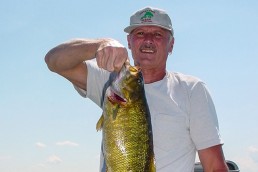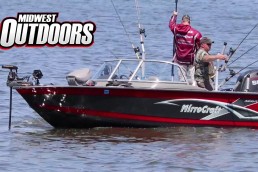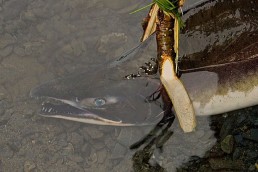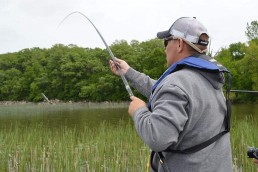Choosing the Right Fishing Line
SHARE THIS POST
Choosing the right fishing line can be one of the most confusing and problematic dilemmas facing contemporary anglers. Just a cursory stroll through any major tackle and outdoors outlet or a riffling through the pages of your latest angler catalogs, or even checking out similarly dedicated internet sites, will quickly affirm the explosion in fishing lines of varying colors, diameters, construction and cost. How, then, to best navigate through the costly and staggering numbers of line choices confronting today’s fisherman?
When I started out fishing in the late fifties/early sixties era, line choices were delightfully limited by comparison. Aside from fly-fishing, you had basic monofilament, braid and new kid on the block leadcore which was a specialty line designed to aid in keeping trolled lures sufficiently deep. The few mono-oriented choices dominated the market for the vast majority, and would for many decades. Good old braid was there for those handy with the baitcasting reels of the era, essentially a compromise choice for those desiring one reel for both trolling and casting more substantive weights.
By comparison, today’s choices are borderline ridiculous in their sheer variety, implied essential differences and especially rising prices.
In very general categories, here is a guide of mine that I hope can help narrow down the staggering number of options that can so befuddle and mislead so many anglers.
Color
This category essentially concerns monofilament and fluorocarbon options, though at least two manufacturers hail “crystal” versions of braid that I frankly don’t find very clear. Savvy soft-plastics anglers much value the fluorescent blue lines that better transmit visual evidence of bites. Utilization of clear or ultra-clear line is much preferred for horizontal presentations like spinnerbaits and crankbaits. Braid is a no-no for the latter or the former, as it stands out like anchor rope in either case. Manufacturers and their pro staffs reliably tout utilization of a uni-knot to tie a fluorocarbon leader to a braid-backing line to supposedly enjoy the low-stretch properties of braid while largely minimizing the visibility of the braid. An expensive option, to be sure.
Configuration
The advantages of braid would include its superior strength-to-diameter ratio. It’s very low-stretch properties that better transmit bites and make for more positive hooksets, and the fact that it inherently floats, which makes it a superior choice for all topwater lures, like frogs, buzzbaits, and prop baits. Though you will find the various braids more expensive than many fluorocarbons and all monos, keep in mind that braided lines can be counted on to outlast the others threefold.
Are you enjoying this post?
You can be among the first to get the latest info on where to go, what to use and how to use it!
By comparison, mono is the most versatile and cost-effective choice for most situations and most species. Its weaknesses include its stretchiness, its susceptibility to fraying, and its “memory”—a tendency to coil and bind more than others.
Fluorocarbon is the most clear of all line types, and is also superior at bite transmission and resistance to stretch—at least over mono. Its negatives include a tendency to not cinch knots down securely and sheer cost.
Size concerns
Braid, by itself, is best utilized for trolling, larger gamefish, and higher-test applications. In most cases, 30 to 60-pound braid is preferable for northerns and muskies. Toothy critters tend to smash it down rather than sever it. This can liberate the angler from the use of action-robbing steel leaders. Braid is also a superior choice for catfishing. It is clearly of greater strength than the others and the visibility that makes it such a handicap with other species is little concern with bottom dwellers that are all but blind and scent-dependent to begin with.
Fluorocarbon lines have their comparatively limited niche in the use of soft plastics for bass and jigging for walleyes in clearer waters. They are not as user-friendly as their monofilament brethren on spinning gear and much more expensive.
Good old monofilament, in my opinion, is easily the best compromise line choice for most fishermen, no question. Tournament and/or “ serious” anglers may better appreciate and feel compelled to use the more expensive and fashionable options, especially when they’re provided these “ superlines” gratis, and sponsored to use them.
Experiment when able and see what’s best for your angling pursuits.
MWO
SHARE THIS POST
Did you enjoy this post?
You can be among the first to get the latest info on where to go, what to use and how to use it!
Jack Kiser
Jack Kiser is the host of “Buckeye Angler” and longtime Outdoors Columnist for the Kent/Ravenna Record-Courier and MidWest Outdoors and Ohio Valley Outdoors magazines. You may reach him at his Buckeye Angler Facebook site.



